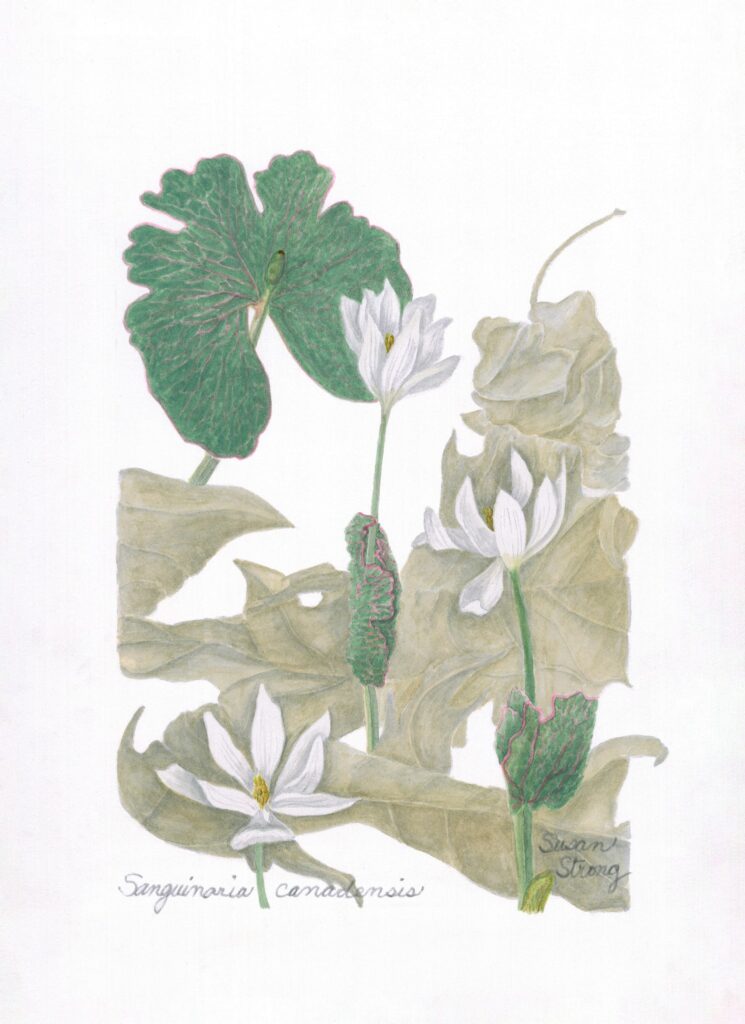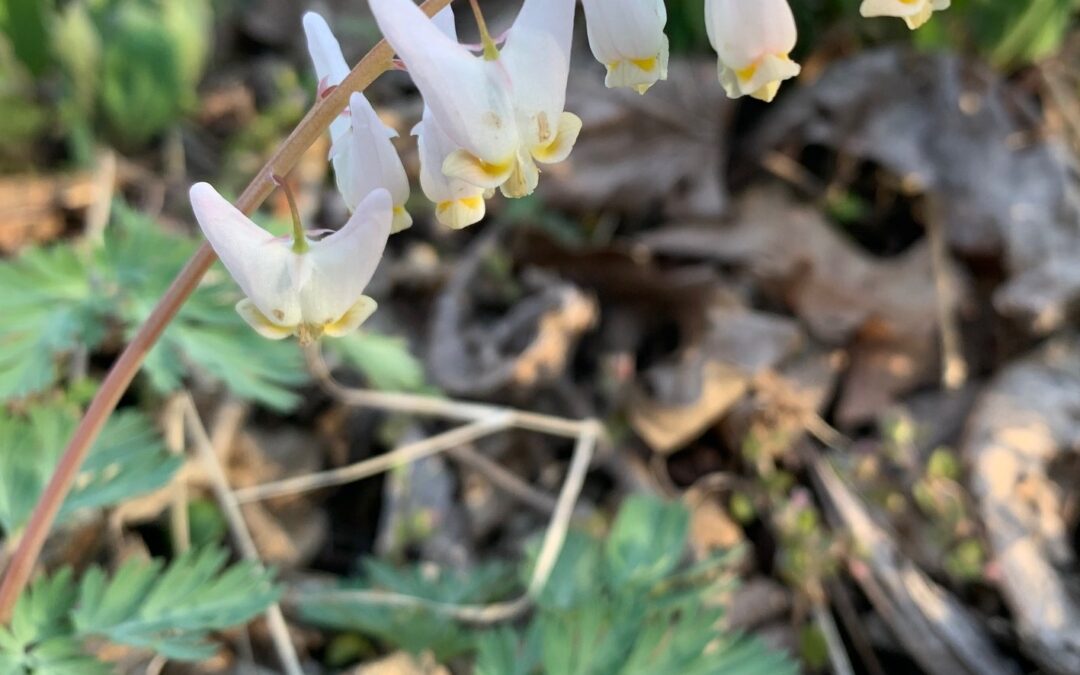There are many little flowers that bloom early in the spring. That is a good thing for the early pollinators. But the flowers don’t bloom to provide pollen for the bees. They bloom early in order to get sunlight.
Look up! Are the leaves on the trees? Not yet here in West Virginia. So the little spring flowers have lots of sun. This won’t last for long. New leaves will soon open on many of the trees, shading the flowers from the sun. Then they won’t be able to make sugar in their leaves to provide the plant with nourishment.
This is the reason many plants bloom before the trees open their leaves. I like to walk along the creeks and rivers at this time of year because many of the early spring flowers seem to thrive where there is moisture. Yesterday my daughters and I walked along the Opequon River. We found bloodroot, dutchman’s breeches, and dark red sessile trillium. The bluebell stems were bursting from the rich wet soil.
Bloodroot is a tiny white flower about 3” high. It comes out of the ground with its leaf wrapped tightly around it. As it matures, the leaf opens to gather sunlight.
It looks like a daisy, but that is to fool you. If you are a bee looking for nectar, you will be disappointed as well. Mining bees who come looking for nectar will pick up pollen on their undersides and carry it from one flower to another. If the air is cold the flower will self pollinate around the third day (Heather Holm, Pollinators of Native Plants, p. 165).

Dutchman’s Breeches has small white flowers that look like trousers hanging on a clothesline to dry. The yellow pollen at the bottom indicates to the queen bumble bee that the good stuff is at the base of the hanging flower. She must pry open the petals and get her long tongue into the nectar. When she withdraws her head, she will have spilled pollen on her head and thorax. In this way she carries pollen on to the next flower. Smaller bees have trouble getting to the nectar, and may have to drill through the petals to reach it (Holm, pgs. 146-47).
There aren’t many bees out and about yet. I did see a bumble bee trying to warm up in the sun along the west side board of a vegetable garden base. She was perched facing the sun to gather as much heat as possible. This bee is equipped for cold weather. She has a warm fur coat that you can see. In addition, she can detach her wing muscles from her wings and use them to vibrate and create heat for her body. Research in England showed that bumble bees may be active in cold weather down to a few degrees above freezing. (Wilson and Carril, The Bees in Your Backyard, pgs. 243-245)
Her mother laid her egg in the fall and then died. This queen bee has survived as an egg in a burrow in the earth. Now she is the first to emerge in the spring. She will now lay eggs and feed the worker bee larvae until they mature and are able to forage for her. This will take about a month. After that her task will primarily be laying more worker bee eggs. As these bees mature, about a month from now, we will begin to see an increase in the number of bumble bees.
Remember, bumble bees are not interested in biting you. They just want to collect nectar and pollen from flowers. Their home is underground, where you will not be bothered. You can help them by planting more wildflowers so they can find food.
Holm, Heather, Pollinators of Native Plants, Pollination Press, LLC, Minnetonka, MN, 2014.
Wilson, Joseph S., and Carril, Olivia Messenger, The Bees in Your Backyard, Princeton University Press, Princeton and Oxford, 2016.


